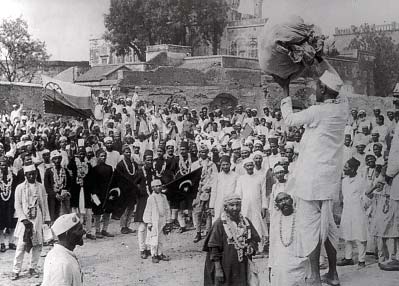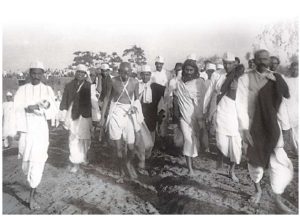Objective
The main objective behind the non cooperation movement was to bring an end to the British rule in India. It was launched on 1st August 1920 by Mohandas Karamchand Gandhi. He launched this campaign as a protest against the 1919 Jallianwala Bagh massacre and Rowlatt Act.
Brief note on:-
Jallianwala Bagh massacare (1919):- On April 13, 1919 – a meeting was called in the afternoon at the Jallianwala Bagh ground at Amrtisar, Punjab. It was a peaceful gathering which soon turned in to a most gruesome bloodshed killing 379 protesters and injuring thousands. Under the command of Brigadier-General Reginald Dyer, soldiers fired by blocking the exit path of the ground.
Rowlatt Act (1919):- It was a law passed by the British govt to arrest and detain anyone without any trial and judicial review. It was mainly a tool created for revolutionary nationalist organisations which protested against the British establishment.
The Non-Cooperation movement is also called as Asahayog Andolan. After the Jallianwala Bagh massacare incident and the passing of Rowlatt Act, Gandhi lost all faith in the British government. Since his ideologies revolved around Satyagraha and Ahimsa (non-violence), he thought the best way to obtain independence from the British is by uniting the people of India to stop cooperating to the British’s constitutional methods.
This ignited a popular movement across the country.
- Students stopped going to schools and colleges run by the government.
- Lawyers refused to attend court.
- The working class went on strike in many towns and cities (600,000 workers were on strike)
Soon the Non-Cooperation movement spread to the countryside as well.
- Hill tribes in northern Andhra violated the forest laws.
- Farmers in Awadh did not pay taxes.
- Peasants in Kumaun refused to carry loads for colonial officials.
- Every class and group interpreted “Non-Cooperation” in a way that best suited their interests.
Non-cooperation movement was negative enough to be peaceful but positive enough to be effective. The British Raj was shaken to its foundations for the first time since the Revolt of 1857.


Thankyou
Keep on writing, great job!
This paragraph offers clear idea for the new viewers of
blogging, that actually how to do running a blog.